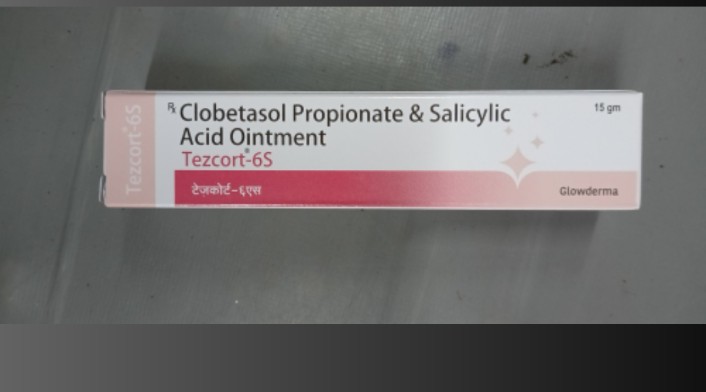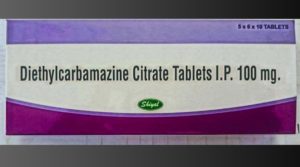
Clobetasol Propionate: Full Review
Clobetasol Propionate is a highly potent topical corticosteroid used to manage various inflammatory skin conditions. It is one of the strongest corticosteroids available, classified as a super-high potency steroid. It is typically prescribed for short-term treatment to control flare-ups of skin issues where other corticosteroids may not be effective.
Chemical Composition and Formulations:
Generic Name: Clobetasol Propionate
Brand Names: Temovate, Clobex, Dermovate, among others
Formulations: Available as cream, ointment, gel, foam, shampoo, and lotion, depending on the area and type of skin condition.
Strength: 0.05% concentration is the most common for topical application.
Mechanism of Action
Clobetasol Propionate works by binding to glucocorticoid receptors on the skin, reducing the release of pro-inflammatory chemicals like histamines and prostaglandins. This suppresses the body’s immune response, leading to reduced inflammation, swelling, redness, and itching.
Medical Uses
- Eczema: Clobetasol is used in moderate to severe cases of eczema where itching and inflammation are pronounced.
- Psoriasis: Particularly useful for plaque psoriasis, Clobetasol reduces the formation of scales and plaques, helping to improve skin texture.
- Lichen Planus: An autoimmune disorder that causes purple, itchy patches on the skin, often treated with Clobetasol.
- Alopecia Areata: Sometimes used to treat autoimmune-related hair loss by reducing scalp inflammation.
- Other Dermatoses: Including allergic contact dermatitis, atopic dermatitis, seborrheic dermatitis, and pemphigus.
Off-label Uses
While Clobetasol is primarily prescribed for skin conditions, it is sometimes used off-label in conditions like:
Vitiligo: To reduce immune-related pigmentation loss, especially in small patches.
Keloid Treatment: It helps soften and reduce the size of keloids, often in combination with other treatments.
Dosage and Application
Frequency: Typically applied twice daily to the affected areas.
Duration: Should not be used for more than two weeks consecutively due to risks of side effects.
Amount: Use sparingly, in thin layers, as this medication is very potent.
Area of Application: Not recommended for sensitive areas like the face, groin, or underarms unless specifically instructed by a doctor.
Efficacy
Rapid Relief: Clobetasol Propionate can provide rapid relief within a few days for severe skin conditions.
Short-term Control: It is effective in controlling flare-ups, but it is not meant for long-term use to potential side effects.
High Potency: Suitable for severe cases, especially when other corticosteroids have been ineffective.
Side Effects
Although effective, Clobetasol Propionate can lead to several side effects, particularly with prolonged use:
- Local Side Effects:
Skin Thinning (Atrophy): Prolonged use can lead to thinning of the skin.
Stretch Marks (Striae): May occur with long-term application, especially in areas prone to stretching like the thighs or abdomen.
Contact Dermatitis: Paradoxically, some users may develop irritation or allergies to the medication.
Increased Hair Growth: Hypertrichosis or unwanted hair growth at the application site.
Pigmentation Changes: Can lighten or darken skin in treated areas.
Acne-like Lesions: Prolonged use may lead to steroid-induced acne.
- Systemic Side Effects (Rare, but can occur with prolonged use or large applications):
Adrenal Suppression: Prolonged use can interfere with the adrenal gland’s production of cortisol, leading to secondary adrenal insufficiency.
Cushing’s Syndrome: Due to the systemic absorption of corticosteroids.
Glaucoma/Cataracts: Possible if applied near the eyes.
Hyperglycemia: Systemic absorption can affect blood sugar levels.
Precautions
- Short-term Use Only: Typically prescribed for up to 2 weeks to minimize the risk of side effects.
- Not for Large Areas: Should not be applied over large areas of the body, particularly on thinner skin.
- Avoid Sensitive Areas: Should not be applied to the face, groin, or armpits unless directed by a healthcare provider.
- Avoid Occlusive Dressings: Covering treated areas with bandages or other occlusive materials can increase absorption and risk of side effects.
- Not for Children: Generally avoided in young children, except under strict medical supervision.
Drug Interactions
There are few significant drug interactions for topically applied Clobetasol Propionate, but caution is needed with systemic corticosteroids or immunosuppressive therapies.
Alternatives to Clobetasol Propionate
For patients requiring long-term treatment or for less severe conditions, other corticosteroids or non-steroidal treatments might be recommended, including:
Betamethasone Dipropionate (less potent)
Hydrocortisone (mild corticosteroid)
Tacrolimus/Pimecrolimus (non-steroidal immune modulators)
Conclusion
Clobetasol Propionate is an effective and fast-acting solution for managing severe inflammatory skin conditions. However, its high potency demands careful use under medical supervision to avoid potential side effects, especially with long-term or widespread application. Always follow the prescribed course and consult a healthcare provider if you experience side effects or if symptoms persist.
other link –https://en.m.wikipedia.org/wiki/Clobetasol_propionate







